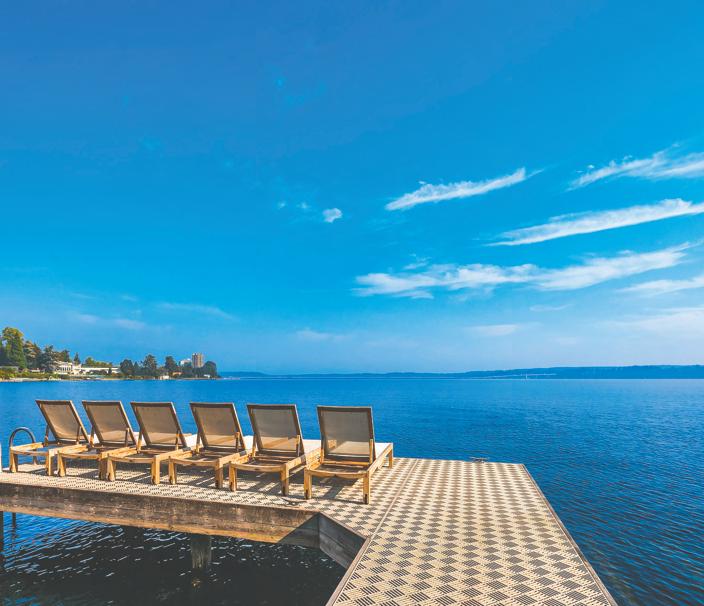

Ann Muno raising a generation of powerful girls
By Laura Marie Rivera Contributing Writer
Ann Muno describes her new book Powerful Girls as a love note to the field of girls’ empowerment and to the girls themselves—“those we’ve worked with, those we’ve raised, those we’ve lost, and those who continue to show us what courage looks like as leaders of today in these complex, unimaginably challenging times.” She chronicled the process as a labor of love that has been the culmination of a journey that began 30 years ago.
Growing up in a small Midwest suburb, Muno’s world was shattered when her sister Kim was murdered at just 16 years old. After a day of work at the local mall, a boy that Kim knew asked for a ride home. Several local teens described the boy as creepy, but Kim ignored her intuition and agreed to drive him home. That decision would cost her sister her life. An absolutely devastating event that Muno wants to prevent from happening to other girls and their families.
This became the inspiration for Muno’s life’s work. “Over the past 30 years, I’ve learned so much about how we can
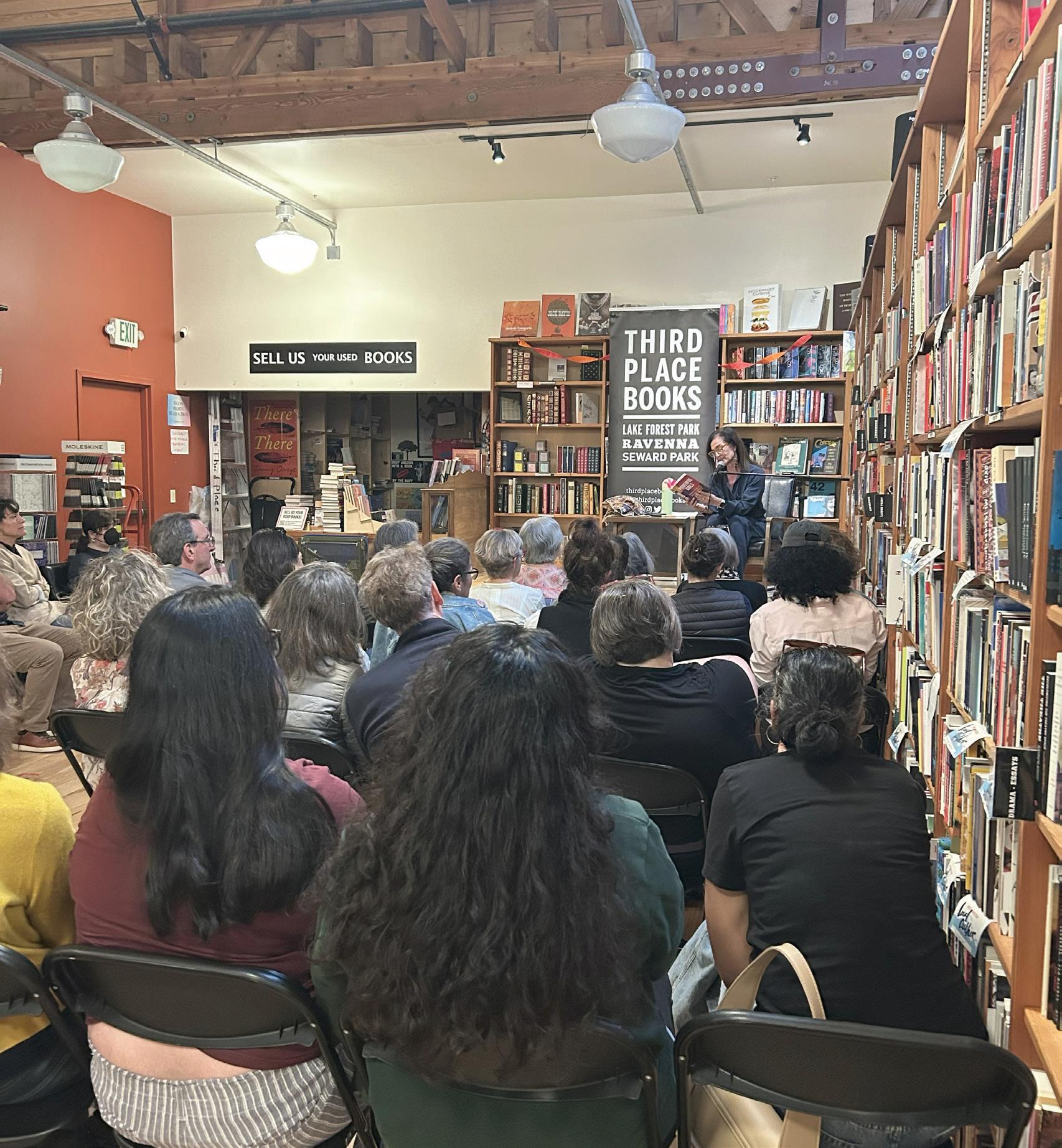
Madison Park’s farmers market opens
By Friends of Madison Park
The Madison Park Farmer’s Market opened on a beautiful June 14, with Joy Hollingsworth leading the o cial ribbon cutting, a wonderful crowd of neighbors mingling and checking out the vendors and a peek at what the Market will bring to the Community throughout the summer. 15 vendors lined the street with flats and flats of strawberries and raspberries, cookies, honey, produce, eggs, grilled salmon sandwiches and much more.
The Seattle Farmer’s Market is adding more vendors- up to 8 more as the summer progresses- with an emphasis on Washington grown produce. The incredible turnout at the opening meant that a few vendors ran out of product, so the Market asks for patience as it grows and settles in for the summer.
Be sure to drop by each Saturday through Sept. 27. Market hours run from 10-2 pm and is located on 42nd Ave E between E
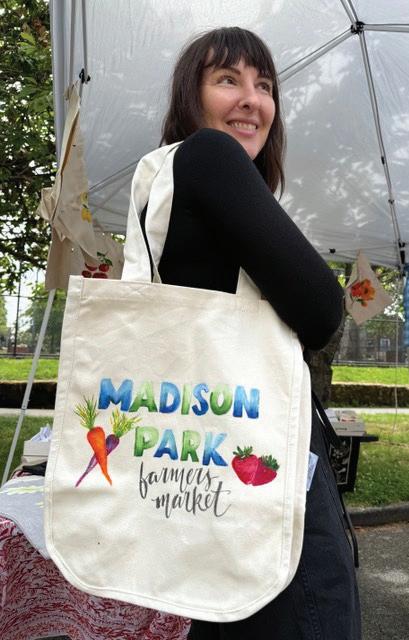


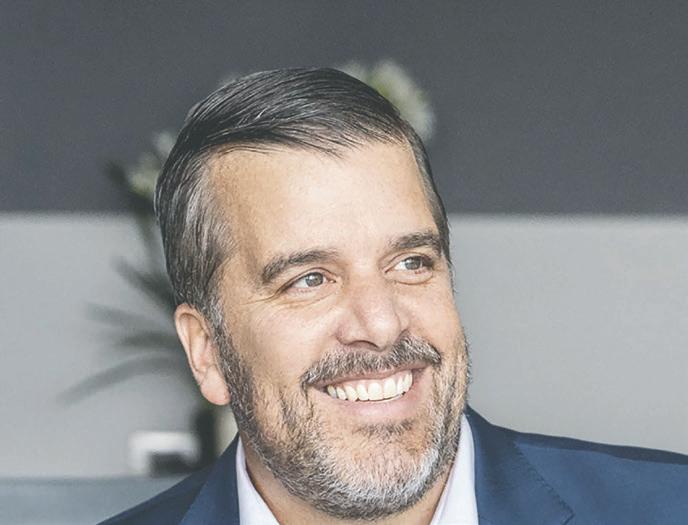


Ann Muno recently gave a talk at Third Place Books in Seattle promoting her new book Powerful Girls:
Raising Strong, Just, and Compassionate Young Women.
The Madison Park Farmer’s Market opened on a beautiful June 14.
PHOTOS COURTESY OF THE AUTHOR

Feverfew: The meek shall inherit the Earth
There are a few plants that could be considered biblical. Not that they play any role in the Bible, but because they validate ancient biblical teachings. In this case: The meek shall inherit the Earth.
In its definition from Webster’s dictionary of 1828, “meek” was defined thusly: Mild of temper, soft, gentle, not easily provoked or irritated, yielding, given to forbearance under injuries, quiet, gently and easily imposed on; submissive.
Which brings me to the plant Feverfew (Chrysanthemum parthenium). Put it in your garden one time, let it bloom and go to seed and you’ll never be without it. It’s straight stems of feathery, lime green leaves will get a foot or two tall. Then branches of buds will appear, opening into clusters of tiny daisy-like flowers, each about 3/4 of an inch across. Happy in most any soil and fairly tolerant of drought, this undemanding and cheerful little beauty will enliven almost any pocket of the garden with a delicacy reminiscent of a Victorian love letter. In full or partial sunlight, light or heavy shade, it grows and blooms with amazing fortitude. It self sows freely. So you’ll see it poppingup all around if your allow the blossoms to brown and mature. Dig seedlings in the spring, putting them were you want them. Or just let them thrive where ever nature has sent them. The
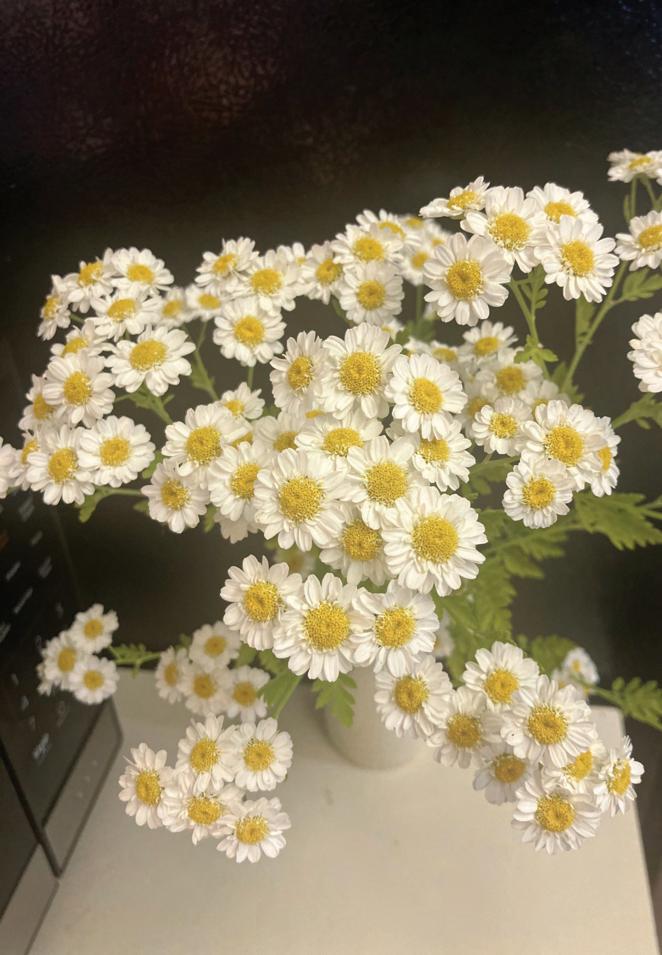
plant will grow up, around and through most any other planting, never crowding, never robbing other plants of their prominence, simply supplementing the beauty. This herbaceous perennial is native to Eurasia, and the Balkans. It is listed in a 4th Century BCE text by Hippocrates as a good plant for treating lesions. Modern texts often refer to Feverfew’s medicinal value, but never really say for what. It must be noted that some people have a mild allergic reaction to this herbaceous perennial, giving them itchy eyes, sometimes contact
dermatitis. If chrysanthemums bother you, stay away from Feverfew. Now, to start with a disclaimer, I am not suggesting this, nor do I stand by the e cacy of what I experienced, but like many plants I had a wonderfully quirky experience with Feverfew. Our family has a house on acreage up in the North Cascades. The fleas up there are huge. I once compared them to grains of rice in size. Back in the 1980s we were at the property with our dog having forgotten any flea repellant. Our dear dog was being eaten alive.
So I pulled a handful of the pungently scented leaves from a Feverfew plant crushed them lightly in my hands and them rubbed them around on the dog’s coat and up and down her legs. She smelled wonderful and, for the next two weeks, there was not a flea on her. As I say, this was my experience, not to be taken as advice. If any reader out there can explain how this solution (instinct driven on my part) worked, I’d love to hear their theory.
As for the name, Feverfew, the only botanical reference I’ve ever seen about it is that early on, because of the structure of the foliage, the plant was called Feather Leaf and, somehow, somewhere, that was corrupted into Feverfew. Then again, it may be some ancient reference to medicinal qualities. However, the name stuck.
You’ll find Feverfew in four-inch pots in nurseries now. There is a cultivar, Chrysanthemum parthenium ‘Aureum’ that has beautiful yellow-gold foliage. Cut the bloom clusters of Feverfew at its peak (well used in bouquets) and it will branch anew and bloom again, kept well watered. And, to reiterate, let the flower heads go to seed and scatter and next year this undemanding little gem will surprise you with appearances throughout your garden. To paraphrase Webster: softly, gently, quietly, submissively and with a mild temper… Feverfew will find its place and delight you with its ability to enhance what you’ve planted, asking nothing in return. The meek shall inherit the earth.
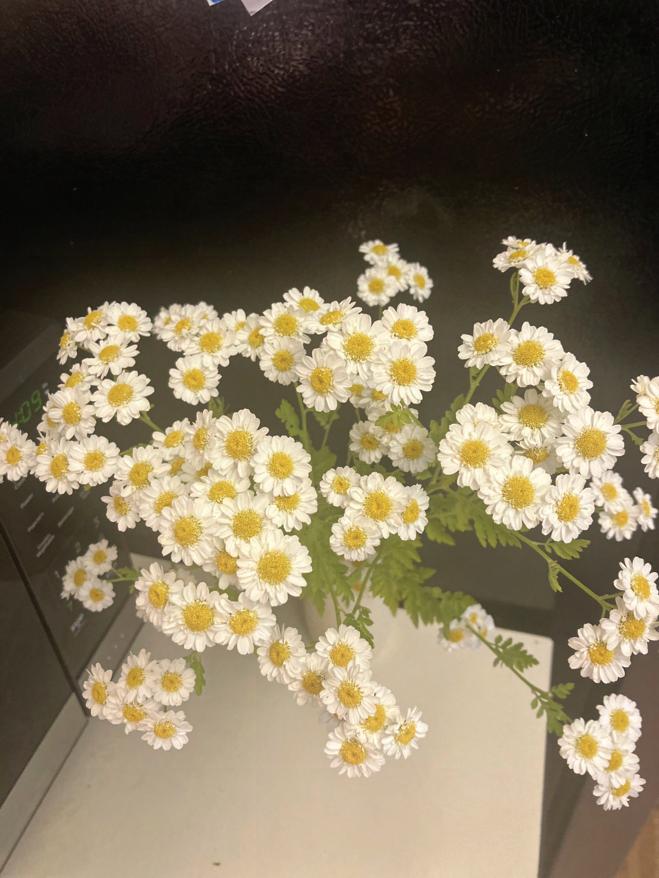
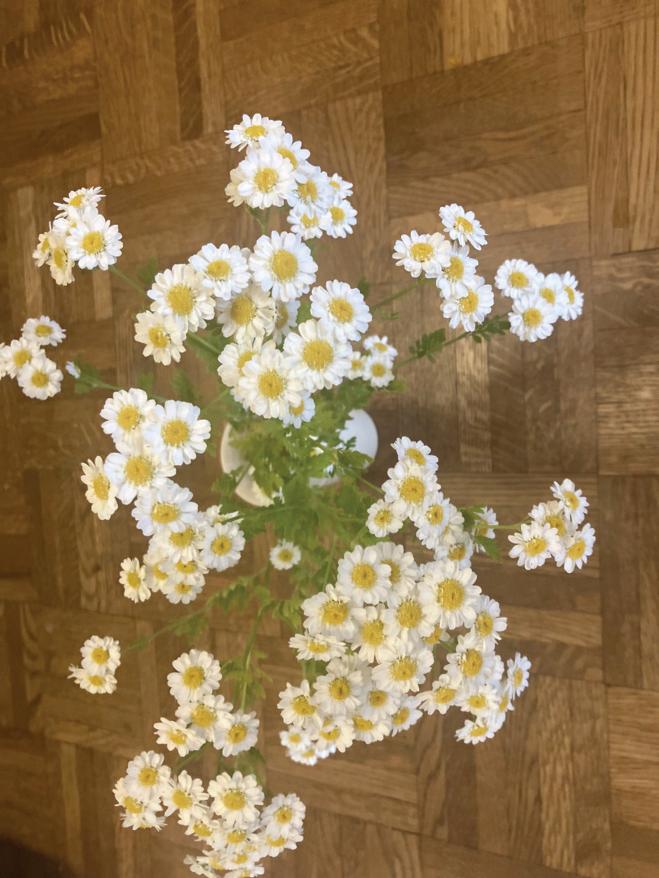
School’s almost out, but reading, learning and growing are in! The Seattle Public Library’s 106th annual Summer of Learning kicks o today with free activities, programs, and challenges designed to keep kids curious, creative and engaged all summer long.
Get started by visiting your closest Library location (www.spl.org/Hours) to pick up a Summer of Learning activity sheet that includes a gameboard for kids to track their reading, learning and growing day by day. Once they’ve filled 15 gameboard spots, they can pick up a small prize from their neighborhood library and their name will go up on the Wall of Fame.
Kids can pick a suggested activity from the sheet or make up their own. A reading activity might include
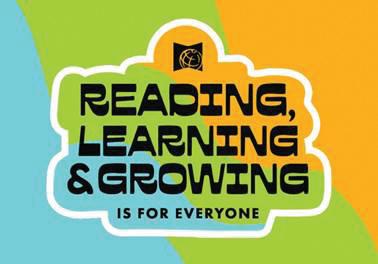
reading for 20 minutes a day to keep your reading muscles strong, or writing and drawing your own comic book. Suggested learning activities include playing a board or video game, visiting a museum or cultural center, or attending a fun Library program. Growing activities might include sharing a recipe with loved ones or learning about local plants. The activity sheet also
connects kids to free Library resources, such as one-onone tutoring through tutor. com; language learning using Mango Languages; and animated talking picture books through TumbleBook. You can also download the Summer of Learning activity sheet at www.spl. org/SummerofLearning in eight languages: Amharic, Chinese, English, Oromo, Somali, Spanish, Tigrinya and Vietnamese.
The Summer of Learning is generously supported by The Seattle Public Library Foundation.
Free summer programs at the Library
The Library will host a range of Summer of Learning programs including magic shows, music performances, filmmaking workshops, artmaking, dance classes and more.
On Thursday, August 7, the Burke Museum is holding a free Summer of Learning party. Join us to explore the Burke Museum and enjoy free activities. In August, many branches will also host end-of-summer parties.
The Library also regularly holds programs such as story times in di erent languages, board game nights, Play and Learn sessions, drop-in chess and more. Find all programs listed at www.spl.org/calendar. All Library programs are free
and open to the public.
Book Bingo for teens and adults
Teens and adults can join the summer reading fun by playing Summer
Book Bingo: Read books in fun categories, fill in your squares and submit your card by Tuesday, Sept. 6, to be entered in a drawing for prizes. Pick up a card at any location or download a card at www.spl.org/BookBingo.
Other cool reasons to visit the Library this summer
The Library is a great place to cool o while browsing books and using the public computers or other resources. Twenty-two of the Library’s 27 locations are air-conditioned, including the Green Lake Branch, which added air conditioning as part of levy-supported renovations completed in October 2024. You can find a complete list of air-conditioned Library locations at
www.spl.org/Shelter. Need book ideas? Find librarian-created book lists for kids at the Library’s website, or stop by your local branch to find a book list, talk to a librarian or browse. More information
The Library and three local artists – Katana Sol, Victoria Urrutia and Yolanda Galery – collaborated on artwork for the Summer of Learning. Find information about the artists on our Summer of Learning page. The Library believes that the power of knowledge improves people’s lives. We promote literacy and a love of reading as we bring people, information and ideas together to enrich lives and empower community. Find more events at www.spl.org/ Calendar. Contact the Library’s Ask Us service by phone at 206386-4636 or by email at www.spl.org/Ask.
Feverfew (Chrysanthemum parthenium): Put it in your garden one time, let it bloom and go to seed and you’ll never be without it.
PHOTOS BY MARY HENRY
Steve Lorton Tree Talk
Seattle Public Utilities thanks residents as regular glass recycling resumes
Seattle Public Utilities (SPU) announced last week that glass collected in residential recycling bins is being recycled again because of rail system improvements and new commercial customers in the western U.S.
Seattle’s glass recycling was paused in 2024 because of the closure of Ardagh Glass Packaging, which operated a bottle manufacturing plant in the SODO business district. The closure left Seattle and the region without a key business in the pipeline to accept recycled glass and make it into new bottles.
“We’re grateful Seattle residents continued recycling their glass throughout this pause. Their commitment is paying o as glass is once again flowing to intended end markets in the recycling chain,” said Andrew Lee, General Manager and CEO of Seattle Public Utilities.
“We also appreciate our business partners working with us to solve this complex challenge. The return to normal recycled glass movement helps Seattle make progress toward our goals of keeping valuable materials in circulation and out of landfill.”
After glass is collected in Seattle and King County, it is sorted and cleaned at Republic Services’ Recycling Center in SODO. From there, it is sent to Sibelco, a global glass
recycler which operates in Seattle and turns the material into clean cullet used in glassmaking.
Sibelco – formerly known as Strategic Materials Inc. and which began operations in the region over 30 years ago – used to sell recycled cullet to Ardagh. When Ardagh closed in 2024, Sibelco stopped receiving glass from Republic’s Recycling Center and other regional recycling programs.
During this pause, Sibelco worked quickly to improve its rail transportation system and develop new customers in the western U.S. for the recycled glass products. This allows Sibelco to resume receiving glass from recycling programs in Seattle and throughout the Pacific Northwest.
“We’re proud to restore regional glass recycling and support Seattle’s sustainability goals. With new investments, we’re sustaining a critical recycling service for key partners, and we’re making it possible for glass to reach a broader network of manufacturers. This is good for the environment and the Seattle region,” said Laura Hennemann, Director of Corporate A airs for Sibelco.
“Seattle residents kept recycling glass through the uncertainty – and that dedication matters,” said Wendy Weiker, Sustainability and Community Outreach Manager for Republic Services. “We’re proud to help ensure that clean, sorted glass is getting a
second life.”
The City of Seattle is now able to ensure that glass is being responsibly recycled – aligning with its goals of zero-waste and a “circular economy” (which reduces waste through reusing, repurposing, and recycling).
Glass typically makes up 15–20% of the residential recycling stream by weight and is one of the most recyclable materials. Recycling glass locally helps reduce energy use, conserve raw materials, lower emissions, and minimize landfill waste.
Glass is infinitely recyclable. It is critical that Seatle protects that value in the recycling stream by processing it locally. Sibelco processes approximately 100,000 tons of glass annually at its Seattle facility. The company has shared its goals to make further investments for upgrades and expansion.
Also, the new Washington state Recycling Reform Act – which became law in May – is expected to increase statewide demand for glass recycling infrastructure. Sibelco’s SODO plant serves as a hub for Washington state’s post-consumer glass, meeting circularity goals while minimizing transportation costs and emissions.
SPU encourages residents to continue recycling their glass and make sure recyclables placed in the blue bin are empty, clean, and dry.
Auto insurance rate increases are slowing down in 2025 compared to previous years
By Carleen Johnson
It’s probably not quite the break Washington state drivers were hoping for, but the rate of increase in the cost of auto insurance appears to be slowing down.
“I checked the numbers just to see where we’re at for 2025 through six months, and we’re at 1.8%,” said Aaron VanTuyl, communications manager at the Washington State O ce of the Insurance Commissioner, noting that’s not likely won’t show up in premium rates for the remainder of the year but should result in much smaller increases for 2026.
“Last year it was up 17.5% and in 2023 the average for that was 24.7%,” he added.
Rates dipped for most drivers just after the pandemic because there were far fewer vehicles on the road and, as a result, far fewer accidents and claims.
VanTuyl explained that OIC must approve annual rate adjustments for insurance providers.

“We’re required to approve rate changes as long as they are adequate and not excessive or unfair,” he said. “What that means is there’s a process in place for rates to come in and be evaluated, and actuaries have to take a look and basically make sure that the insurance companies are accounting for the need to increase rates, so we can keep pace with the cost of claims and to pay out administrative costs.”
According to VanTuyl, OIC’s experts spend months making sure they can legally justify the rate change insurance companies are requesting. According to AutoInsurance.com, the average cost of full coverage car insurance in the state of
Washington in 2024 was $1,452 per year, which translates to about $121 per month. Rates can be dramatically higher for those who have been involved in an auto accident, received a speeding ticket, or have committed other driving infractions.
According to an AutoInsurance.com report, “Teen drivers face the highest auto insurance rate in every state. In Washington, the average annual cost of full coverage for drivers aged 16 to 19 is $4,294, compared to an average of $2,755 for drivers in their 20s.”
When life throws curveballs
What can we do when life upsets us?
Take time to notice how often you are upset during the day. You’ll likely see that usually it’s because life upended your expectations. Therapist and author Christine Hassler calls this an “expectation hangover” – the frustration and internal pushback we experience in disappointment. It might be something small, like the café is out of your favorite co ee, or something more challenging.
Some of the ways we respond include getting annoyed or angry, complaining, or spending time trying to fix the situation, i.e., force today’s round peg into your square vision.
That doesn’t usually go well. Let’s say you misplace your keys, spending precious minutes locating them, all the while saying to yourself, “I can’t believe this is happening, I’m going to be late, I can just hear my boss’ reaction, etc.” before running out the door in a hu . That’s when you forget your laptop or slam your finger in the car door. “That’s just my luck,” you mutter as you drive o At work you tell co-workers, “You won’t believe the day I’ve had,” rehashing all the ways that life has done you wrong today.
The brain is constantly seeking e ciencies to help us streamline the millions of functions and thoughts in day. Both the reticular activating system, which notices patterns, and the amygdala (the fear processing center) latch on to what you notice. If you are telling yourself – whether verbally, silently or somatically through body signals like tension – that life is a struggle, your brain will help you notice more correlating information. The amygdala, with a negative bias meant to keep you safe, lights up when you think fearful thoughts or predict chaos and catastrophe.
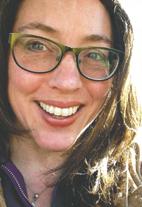
the Lesson Plan.” I think this may be the answer to handling life’s curve balls. Predicting them is unlikely, obliterating them is impossible, so let’s roll with them with as much grace as we can muster.
The number of potential annoyances, disappointments or mental derailments we can experience is infinite. The Buddha’s famous saying, “Life is su ering,” sounded depressing and fatalist the first time I heard it. Who wants su ering to be the meaning of life? I’m no expert about Buddhism, but I think he meant that su ering is as much a part of life as breathing.
The world is a dynamic system, always changing, and humans are always looking for preferences to help game the system and make it “just right.” We love routines, comfort, predictability – they feel safe, calming, and they enable us to more e ciently explore creativity and learning. Ironically, the learning creates new preferences, we become habituated to that learned system, and so it goes. Sometimes with the perspective of time, we see our challenges have helped us, led us to places we’d never imagined. You’ve probably heard someone say on a meme or podcast that they learned to say, “life isn’t happening to me, it’s happening for me.”
Like the report’s authors, VanTuyl OIC suggests shopping around for a better rate.
“We do recommend people shop around, because, like the study shows, you can usually reduce costs by getting a new policy somewhere else,” he said. “And the other thing to look into is maybe if you’ve got an older car and it’s already paid o , and all, maybe you don’t need full coverage. Talk to an agent or broker, and ask them about discounts, and ask if switching to somewhere else can get you a better deal.
In the car keys scenario above you are doing both, creating a feedback loop that keeps you in a very bad mood while paying more attention to things that reinforce that mood – a coworker you don’t get along with, the weather, and so on.
My youngest sister in New York City is a high school teacher – an award-winning one, at an alternative school for teenagers and young adults who weren’t served by the conventional system. Her students’ lives come with lots of challenges. Her co ee mug reads, “Keep Calm and Pretend it’s On
That’s not always easy to do as frustration builds in your chest. It may feel performative at first, like an a rmation. Big challenges usually come with learnings. Little challenges, less so. It’s possible that somehow that challenge would have helped you somehow - maybe leaving five minutes late you avoided an accident on your route, or your favorite sandwich would have had bad lettuce on it. We can’t always know if the challenge will prove to be helpful later. But try saying things to yourself like, “It’s going to be fine,” “I’ve got this,” or “This won’t matter to me in five years.” That can short-circuit the negative feedback loop in the moment – which is a miracle not to be underestimate. At the very least it feels better than continuing the negativity. That alone can improve your day – and maybe that of all the people you meet too.
The Center Square
ADOBE STOCK
Erica Browne Grivas Get Growing

Car-life from yesteryear A friend above
Growing up in Madison Park, the streets were our kingdom, where we’d race each other on wobbly wheels or dare the tallest kid to jump that one suspiciously uneven curb. Every corner was a new opportunity for glory — or a scraped knee. Half of what we built probably wouldn’t pass a safety inspection today, but hey, who needs OSHA when you’ve got imagination?
Back in the late 1940s, the Madison Park crew had a sort of rite of passage — graduating from wobbly bicycles and rickety soapbox racers to the grease-clad world of automobiles. We’d hang out at the local gas stations, pretending we knew what we were doing while poking at engines and asking questions. It was like a crash course in car anatomy, minus the textbooks and a lot of elbow grease. Turns out, cars back then needed grease in just about every nook and cranny — seriously, it was like they were held together by sheer determination and a tub of lard.
It was cool that car hood ornaments and decals displayed the car names. A friend’s dad took us to a new car show on Broadway and Union that featured the debut of a Hudson. We read car magazines with previews of the vehicles that would be displayed. On the walk to school, students would see a car and call out, “Chevy!” “Ford!” We salivated over all vehicles but were barely old or rich enough to own any.
Young car owners around age 15 in Madison Park would gather in Canterbury Woods on Saturdays to wax and detail their cars. Bottles of coke were placed atop cars, while a case of Oly was hidden behind bushes, out of sight from cops like Gordy Sacket.
The car was a status symbol and a step into adulthood. How to afford one, was the question. Some kids found jobs at the Seattle Tennis Club as ball boys or Broadmoor Golf Club as caddies. I worked downtown at Bob Dunn’s Used Cars on 7th and Aurora, next to the first Shucks Auto parts, which stocked everything from mu ers to carburetor stacks — all for looks and
“Best Ever Garage Sale”
DESIGNER GARAGE
SALE 2025
Shop a huge collection of professionally selected, beautiful, unusual, and decorative, high-end objects for the home 30% to 50% below comparable retail values
July 12 & 13, 9AM-4PM 3916 E. Garfeld St., 98112 Madison Park
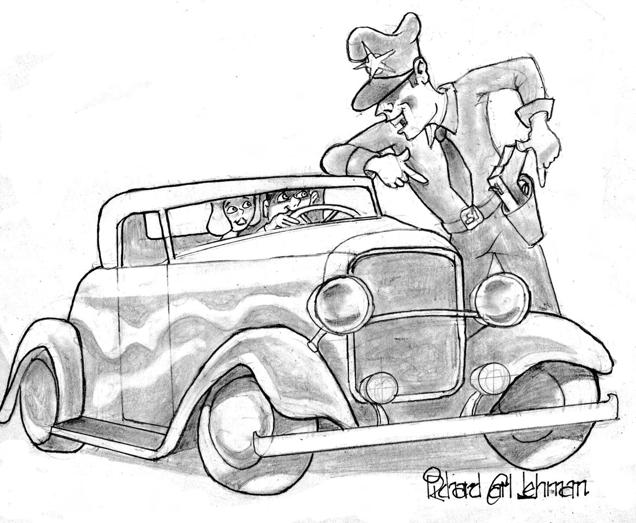
power!
My day started at sunup, ending eight hours later. In three days, I washed 107 cars faster than anyone they’d seen. I wanted that first car and earned as much as possible that summer. My uncles worked in the car painting industry, where I learned to use a bu er. This handoperated disk applied wax to restore an oxidized finish to a nearly new luster.
Before “Kelly Blue Book,” now “Autotrader,” car sales ads were all exaggerations. Kelly established vehicle pricing standards. At Bob Dunn’s, I learned to estimate car damage. When a car was sold, I processed it by driving to John and 11th (now I-5 entry) for new plates and title agreements. For trade-ins, my job was to bring life into the formerly owned elderly beasts. Here’s where surgery came in. Remove the seat covers to show the original fabric. Take out the brake and clutch pedals showing wear and tear. Clean the interior removing anything resembling the car’s age. Tires! The new siping machine cut grooves into the almost bald surface. The last process to this face lift was the speedo speedometer store. The trade in was now hanging with the best. The used car lots auctioned o groups of cars to have a better chance of selling in other Seattle lots.
My uncle discovered my first car — a 1942 four-door Dodge. This vehicle, painted in AG44 Army color with a star on the bumper, was formerly used by a General. It drew considerable attention at Garfield High School serving as an excellent means for students to locate areas away from school grounds.
Uncle Max, Herman, and I applied three gallons of midnight blue
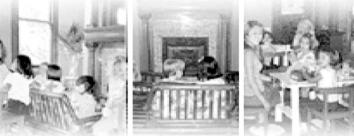

This morning the sound of water woke me at seven, splashing onto our balcony. I’d been awake reading until nearly two, and hoped to sleep until eight or nine. First, it’s a Saturday. Plus nothing pressing waits at my desk. And that’s a rare thing for me.
A flock of geese honked, the birds sang, the usual morning sounds, but the downpour was strange, beyond strange, as the sky was that vast beautiful blue that happens more and more this time of year.

lacquer to paint the Little General. We enhanced it with full fender skirts, dual exhaust pipes, lowered suspension blocks, and dual spotlights. The Little General was significantly improved in appearance. It was even well-received among the esteemed ‘34, ‘36, and ‘39 coupes that had been converted into hotrods.
The innovation of customizing cars into hotrods did not go unnoticed by the automakers. The Tucker was designed with six tail pipes and a low profile. The Ford featured a hard top that folded into the trunk. This invention had a limitation if the alignment was o by a few degrees, it would stop midway. The Chrysler model included a large wrap-around windshield, providing a wider field of vision. An issue arose when jacking up the car, a vertical crack could appear due to the way the car was torqued.
Before Shucks, we had to drive north with a screwdriver and wrench in hand to the many wrecking yards on Aurora around 125th. There you would tell the counterperson that you needed a ’40 Ford generator. After checking the inventory map, he sent you to say the 3rd row, Ford aisle. Voila’ there was a crumpled ’40 Ford station wagon to simply remove the generator and give the counter man $12. Today’s identical job replacing the defective part with a new one requires reconfiguring and a commission of approximately $270 or more.
A fun find at Shucks were blue filters for the rear lights and also under the car frame—quite sexy, actually. The law said, “No!” Blue lights are for snowplows and would be ticketed. A better find was the Bermuda Bell installed under the floorboard by the brake pedal. While cruising wanting to greet a friend, simply press the striker and “Bing Bong!” So loud and so cool.
I was cruising in my ’50 Ford convertible on 19th and Madison and came across some dude waving his arms forcing me to the curb. He was a civilian cop going to work and had to remark on my bell and says, “Remove it or I’ll write you a ticket!” With the wrench I installed the bell I removed it. He retorted, “And keep it o !” Fat chance, I just checked my surroundings after that event.
One friend had a ’40 two-door Nash and like the Tucker, there were six tailpipes installed from the manifold back. If you could hear the Nash at Garfield, you could hear the Nash at Franklin! Once again, John Law made him reduce it to two mu ers.
A Friday night date and the want
I threw back the covers. When I stepped onto my balcony, I saw that my upstairs neighbor was pouring buckets of water over his. I said, “What are you doing?”
And he said, “I’m cleaning my deck.” He heard the alarm in my voice, the distress in my tone, but he threw another bucket anyway, splashing potting soil out of another of my planters.
“Well, you’ve made quite the mess of mine!” I yelled. Which made the big white dog that lives below me bark and the small white dog bark that lives next to the big white dog bark. Before long there were three dogs barking.
“OK, I’ll stop,” he said. And without apology, he went back inside and slammed the door.
It took me all morning to clean up the muddy spray that smeared my flooring, chairs, flowerpots, and siding. A part of me felt like marching up to his place to say that a condo balcony isn’t like the deck of a house where you can do what you like. But I know disinterest when I hear it, heed it when it comes at me, and try not to overreact, i.e., cuss at him. Because I wanted to cuss at him.
The bright spot is that he made me miss my old upstairs neighbor, Frank. Or, sometimes known to me as, “Fraaank! For cripes sake, are you smoking on your balcony again?”
“I know. I know,” he’d say.
Frank and I never met face to face. We were a little like Tim & Wilson who never revealed his full face on the sitcom “Home Improvement,” communicating not from behind a fence, but with a floor/ ceiling between us. But the way we disagreed, I realize, was a rare gift between neighbors. Compared to what happened this morning, our exchanges were gentler, more considerate, even humorous—the best kind of neighborly give-and-take.
“Fraaank?”
“Promise you won’t tell the board on me.”
Frank needed to smoke, and I knew it. I also know the truth of condo living is that it’s impossible to connect deeply with all of your neighbors, consideration is more important. So Frank’s smoking was kind of a test. It felt like that to me anyway, and I did my best not to over object to his dependency because I also valued his quiet dignity, his sort of innocent chuckle mostly aimed at himself, and for two years, he revealed more and more ways the word “neighbor” was apt.
For example, in August of 2022, I had a gathering of friends that was bound to get a little rowdy because I’d made a pitcher of Negroni’s. I
texted Frank to say that one of us tends to laugh really loud when her dance shoes are on — it was me — emphasizing that it was Girls Night Out because I thought it might be rude to warn him but not invite him. Later — two seconds later —he texted back, “Can I come?”
Frank died in 2023.
And, writing this now, I think how the people I know on the island are smart, hardworking people, saving the world with our organic food, recycling, and electric vehicles which, if nothing else, mirrors our hope. We do what we can, fight for things that need saving, buy our books from our local bookstore, support our community because, we figure, too many people don’t anymore. I understand that this is the best most of us can do, and it’s the best I can do.
But Frank? Frank (Frank R. Jozwiak, tribal lawyer) did so much for so many that it feels as if this is no longer a story about neighborliness, but about selfless dedication.
Frank and I never talked about our work lives. It was only after he died that I read how he practiced federal Indian law, including 10 years as in-house counsel for the Makah Indian Tribe at Neah Bay. He drafted tribal constitutions, ordinances, drug and alcohol codes for tribal governments and enterprises. He represented tribal clients before numerous federal, state, and tribal courts throughout the United States. God, I thought, no wonder he smoked.
Once, Frank spoke more intimately. Leaning over the railing, he said that his wife used to scold him, too. “About what?” I said.
“One thing or another,” he said. “So you kind of make me feel at home.” It wasn’t an invitation to a longer conversation, just a clear after in our relationship—reserved before and more friendly after.
As soon as I was back inside, I excitedly told my husband what a great exchange we’d had. When he asked me what, specifically, was so great about it, I couldn’t really explain why Frank’s talking about his personal life made me feel so happy, only that it did, as if the floor boards above had finally swung open to let a friendship in, which I think is the best way of putting it. These are the kind of interactions that have always renewed me. It just took us longer to give ourselves over; to recognize how in need of each other we really are, or can be, if not with this neighbor, then some other neighbor.
And if I have any influence by telling a story about a good neighbor and it makes another person into a better one, it’s been a good workday in my world.
Mary Lou Sanelli’s latest title is In So Many Words. She works as a writer, speaker, and master dance teacher. For more information visit www.marylousanelli.com.
Mary Lou Sanelli Falling Awake
Richard Carl Lehman Revisiting the Park
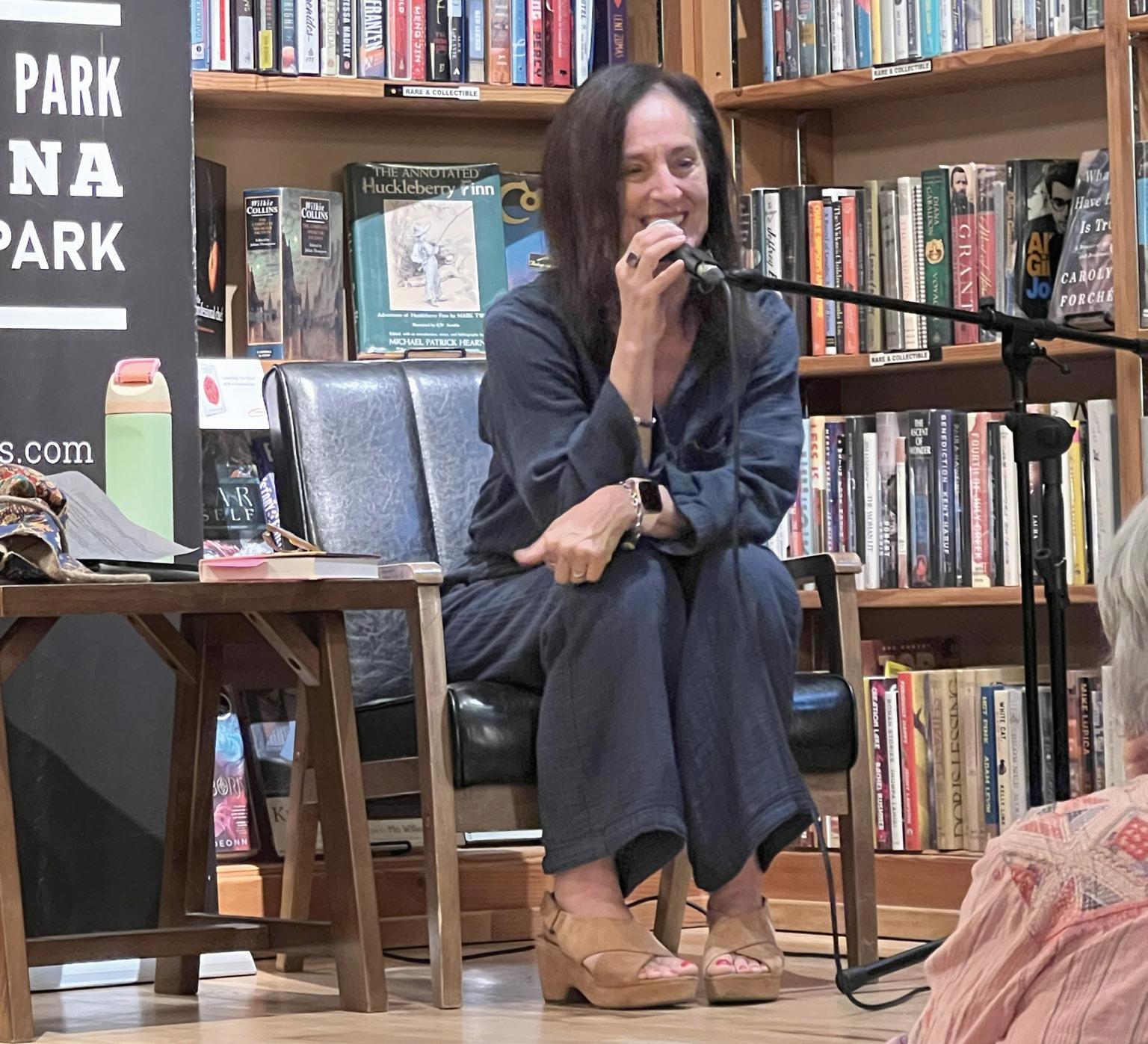
From page 1
create a healthy girl culture and give them a very di erent version of what their adolescence can mean—one that is grounded in their power,” Muno said. She envisions a world where community interventions center girls as change agents. Since, “I wear two hats – that of a mother and a girls’ advocate,” Muno said, this work serves the dual purpose of addressing the harms of the past while aiming to prevent future harm. Muno and her family have lived in Madrona for the past 30 years. They have two daughters, Bella and Lena, that were born in Seattle. And two daughters, Betelhem and Adanech, that were born in Ethiopia and adopted after losing both of their birth parents. The girls are all grown now, but the family values their time in the neighborhood: attending Madrona K8 and Garfield High School, walking to the grocery store, visiting the local parks, and even hearing Amharic along the way. “There are too many things to count when it comes to how much I cherish where we live,” Muno said. While raising her four daughters, Muno was building the Justice for Girls* Coalition of Washington State. “Countless lessons gleaned from my work had a profound impact on our home life and establishing a healthy girl culture was a daily commitment,” Muno said. According to the organization’s website, the vision is to make our state “a leader in
LEHMAN
From page 4
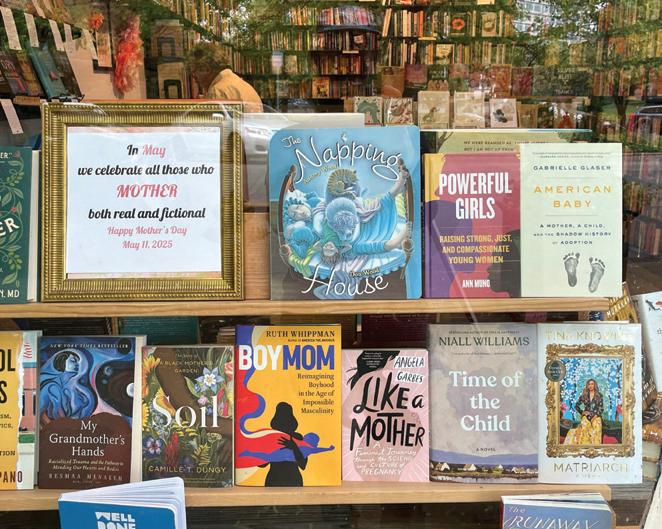
As seen around town—for Mother’s Day, Ann Muno’s book was featured alongside many powerful books on motherhood, including Essential Labor, the national bestseller by local author Angela Garbes.
o ering practices, programs, and policies tailored for girls facing adversity so they can overcome obstacles, access opportunities, and secure a purposeful future.”
Powerful Girls: Raising Strong, Just, and Compassionate Young Womenis an invaluable guide to cultivating powerful, compassionate young women by nurturing confidence, identity, and a passion for justice. In the book, Muno reconnects with fifteen young women who had participated in the Powerful Voices program and discovered that the eight essential powers they had developed in their girlhood groups decades earlier were still vibrant forces in their adult lives today. The shared conversations stressed the urgency to ensure that younger sisters, neighbors, and coworkers developed and asserted these same powers. With the additional caution
for the car to be at its best called for a car tune-up: plugs, points, and condenser for $14, a tire recap at 12th and Cherry, $11 each. Filling the tank cost $6 at $.22 per gallon. To top it o , a pipeful of Mixture 69 was called for to saturate the car to impress said date. Next, cruise east to the Sunset Drive-in to park in the back row to meet friends
MARKET
From page 1
Blaine and E Madison. Please walk or bike as much as possible and shop at our local businesses on your outing. To learn more about the Market, go to www.friendsofmadisonpark.com/farmers-market.
GARDEN TOUR AN
ABUNDANT SUCCESS
On a gloriously sunny June 7, close to 600 people strolled Madison Park to view the 14 gardens on the Friends of Madison Park’s Second Annual Garden Tour. Everyone had a di erent favorite, but the designs ranged from a spectacular waterfront garden with stunning views of Mt. Rainier, art, a pool, an indoor koi pond and filled with fresh vegetables and fruit trees to smaller backyard jewels filled with flowers, inviting seating, a meditation garden and several more cozy retreats. And all within walking distance on the flats of Madison Park.
CHILDREN’S PARADE AND PICNIC - JULY 12TH
Children’s Parade and Picnic is around the corner. Saturday, July 12th from 11:452 pm. Come decorate bikes, trikes, scooters and yourselves at Starbucks corner. The parade begins at noon- on its route to the park, following our local fire engine and music. Arrive at the park for games galore- sack races, tug-of-war, watermelon eating contest, balloon toss plus music, face painting, balloon art, hot dogs, snocones, popcorn, Bamboo Thai and more! Don’t miss out!
MUSIC IN THE PARK BEGINS THURSDAY AUG. 7
We have an amazing line-up of bands for this summer’s Music in the Park series. Bring your picnic and blanket and enjoy the series every Thursday in August from
6:30-8 in the park. The Music Factory will have student musicians providing warm-up bands starting at 6 pm. And it’s all free. Invite your friends and family too!
August 7- Eden, featuring Savanna Woods
August 14- Angela So e Band
August 21- The Carlile Family Band
August 28- Neon Rain
PARTY FOR THE PARK RETURNS SEPT. 13 AT BROADMOOR GOLF CLUB
Friends of Madison Park’s Annual Fundraiser- Party for the Park- is moving its venue this year. Broadmoor Golf Club is our new location- the date is Saturday September 13th beginning at 6pm. Join us for the evening of live and silent auctions, games, delicious food and drinks, dancing and the opportunity to support your community and all its wonderful projects and events.
Tickets will go on sale in July. Check out our website www.friendsofmadisonpark. com/party-for-the-park to buy your tickets and get more information.
MEETINGS
NEIGHBORHOOD
Friends of Madison Park will not be holding neighborhood meetings this summer. We do have 2 important meetings coming up in September.
Tuesday, Sept. 9: The follow-up Bathhouse Renovation and Beach Restoration Meeting with the architectural team of Signal Architects and Anchor QEA Landscape Architects will take place. 7 p.m. at the Bathhouse. The team has taken the feedback from our initial meeting in May and will present some possible options to be considered for the project.
Tuesday, Sept. 30: Meeting with Third District City Council Rep Joy Hollingsworth to take your questions regarding the One Seattle Plan and other issues for the community.
that not intentionally sharing these powers is the equivalent of “sisterhood malpractice.”
Later this year: on October 25, Justice for Girls is launching the 5K. Held on the International Day of the Girl, participants are invited to join a worldwide movement addressing gender inequity and celebrating girls’ achievements and potential here in Washinton state. For more information or to become a Team Lead, contact justiceforgirls.wa@gmail.com
*Justice for Girls uses the term “girls” inclusively, referring to cisgender girls, transgender girls, gender non-conforming youth, genderqueer, and any girl-identified youth. They foster a collaborative and open environment where feedback is encouraged and consider racial equity, youth voice, and ally-ship the fabric of their work. More information at https://www.jfgcoalition.org/
who were enjoying a pre-movie classic: chase the red dot on the screen with spotlights. A good trip was to go all the way to Tacoma to Bush’s Drive-in restaurant—it was like a car fashion show—who knew cars could strike a pose? And let’s not forget our very own Madison Park in Seattle, the place where you could socialize, network, and maybe even meet someone who would pretend to be interested in your endless stories about carburetors!


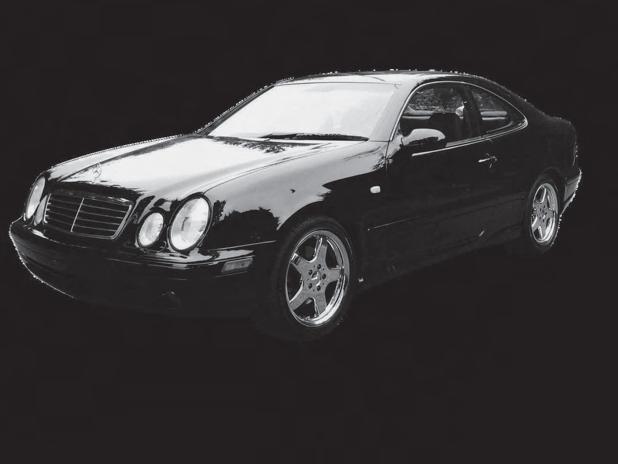
PHOTOS COURTESY OF THE AUTHOR
MUNO

Lean On Me: Unexpected Alliances During Trying Times
e’ve all heard stories of
and hopeful images like a
holding a puppy above flood
energetic volunteers stacking sandbags. Stories like these also leave us wondering if we’d tap into our own “inner heroes” in this situation.
I think we definitely would rise to the occasion when disaster strikes (it’s the basis for the Seattle Emergency Hubs – the all-volunteer organization that I’m part of). This month, I was inspired to find and share some of the more interesting stories of “disaster compassion” that I could find.
Hurricane Harvey: Monster Trucks and the “Cajun Navy” 2017’s Hurricane Harvey caused record flooding in Texas and Louisiana, and help came from some unexpected sources.
Volunteers associated with a Dallas racetrack donated five 10-foot-tall monster trucks to help Houston area e orts. The trucks carried first responders to the places they needed to go, helped rescue stranded people, and towed stuck vehicles, per ABC News. If you think about it, monster trucks are

Dana Armstrong Emergency Prep
perfectly suited for flood rescue, since they’re high o the ground and designed to ride over (and handle) nearly anything.
In a separate Harvey e ort, a loosely organized group of Louisiana volunteers known as the Cajun Navy (no relation to the U.S. military) mobilized to help Texans, using “bass boats, airboats and other small recreational vessels” to reach evacuees, per the New York Times. They brought their boats over on trucks and trailers and then navigated the flooded streets looking to help, with the boat pilots using primitive phone apps to navigate and walkie talkies to communicate.
The Cajun Navy initially emerged from Hurricane Katrina rescue e orts and is still active in rescue today, calling itself the “original grassroots disaster response team.”
FROM A SMALL CANADIAN TOWN TO BROADWAY: A 9/11 STORY
In 2014, I visited NYC’s 9/11

Memorial and Museum. I expected to be horrified and feel solemn and chilled as I had during an earlier visit to the Holocaust Museum. Instead, I was unexpectedly moved to tears, frequently, by the exhibits focusing on people’s kindness and strength during and after the event. The museum emphasized Americans’ generosity, and I appreciated this sensitive approach to a devastating subject. And this generosity wasn’t limited to Americans: when U.S.bound airplanes had to land in
Canada after 9/11, they touched down in a small Newfoundland town named Gander, with a population of a mere 10,000. Gander and neighboring communities suddenly needed to make room for 38 planes and 7,000 stranded passengers – and all their unexpected needs, including meals, pet care, baby food, and more.
The area sprung into action, with town governments closing schools and pausing nonessential jobs – essentially turning every resident into a potential volunteer. And the locals hosted with unparalleled generosity: hosting the passengers in their homes, cooking for them, and even providing entertainment, including concerts and bowling.


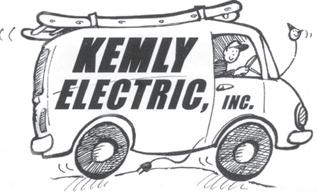

Per 911memorial.org, “Area pharmacies filled prescriptions without cost, banks of free public telephones were installed so visitors could call home, and donations of toiletries, clothing, and food flowed in. Much of the food was stored at the Gander Community Centre’s ice rink, turning it into ‘the largest walk-in freezer in the country.’”
Although this e ort may seem extraordinary to us, a local newspaper reporter said, “For us, it was just every day. You don’t turn your backs on people in need.” As the mayor of nearby Appleton said in a 2017 interview, “There is goodness in the world that floats to the top in times of disaster.”
The response from the residents was so heartwarming that it inspired a Tony award-winning Broadway play, “Come From Away.” It didn’t hurt the story that
NOW is the time
to start thinking about applying to college. Dr. Jen Veterane, a retired high school teacher with 31 years of experience with a doctorate in applied learning sciences, is o ering her expertise to assist parents in preparing their child’s college applications. Her services include helping students create a tailored college list, refining their personal statements, and supplemental essays. Interested parents can contact her via email, and her services are billed at an hourly rate. The goal is to have the applications ready by the end of summer for seniors. For juniors, applications will be ready by the end of summer 2026. jenniferaveterane@gmail.com
two of the airplane passengers fell in love during their stay.
Unusual Rescuers in a Japanese Earthquake
On March 11, 2011, Japan experienced a devastating 9.0-magnitude earthquake near the eastern Tōhoku region. Residents experienced prolonged blackouts, water outages, and fuel shortages. Government workers were slow to reach the a ected areas.
Help arrived from an unexpected source: Japan’s organized crime syndicate, the Yakuza. Per Reuters, Yakuza groups sent trucks from Tokyo and Kobe to evacuation centers laden with food, water, blankets, and toiletries. In many cases, the article said, the Yakuza were first on the ground! Yakuza know “what it’s like to have to fend for yourself, without any government or community support, because they are considered outcasts,” the article said.
Another tale I didn’t know from that same quake: About a month after the quake, a campaign of “jishuku” (voluntary self-restraint) emerged in the country. Per the New York Times, even in unaffected areas of Japan, people not only made cutbacks in power usage (an effort to conserve power due to the closing of the Fukushima nuclear plant – a contribution that did help cancel some planned blackouts) but they also abstained from “seasonal pleasures”: cherry blossom viewings and fireworks festivals were canceled, graduation ceremonies were deferred, and even consumerism took a hit. Per the story, jishuku was a way for an entire country to express solidarity in a time of crisis.
A LOCAL EFFORT GOES
NATIONAL: ‘SHOPPING
ANGELS’
Jayde Powell was a pre-med student at the University of Nevada during the COVID-19 pandemic when her mother asked her to call older neighbors to see if they needed help, per a CNN story. She went beyond that, enlisting members of her medical fraternity to shop for and deliver groceries to at-risk older people with limited options. The effort grew and after a local TV interview, her “Shopping Angels” effort went viral, birthing similar groups throughout the United States.
ADOBE STOCK
Women's hockey on the rise in Pacific Northwest
By Andrew Destin
SEATTLE (AP) — Elly Garcia-Dudek can't help but gaze out toward the ice during hockey practices at the Kraken Community Iceplex.
The 12-year-old Garcia-Dudek is a big fan of women's national team stars like Hilary Knight, who starred for the Boston Fleet of the Professional Women's Hockey League last season. Pretty soon, GarciaDudek — who started playing through the Seattle Kraken's Learn to Play program — won't have to look across the country for role models like Knight.
The PWHL is expanding to Vancouver and to Seattle next season, which was music to Garcia-Dudek's ears. She and her family are Kraken fans and have already put down deposits for PWHL Seattle season tickets. Luckily for Garcia-Dudek, Knight has agreed to play in Seattle.
"It's really inspiring and cool to watch them play because it's di erent from the men's game because women aren't used to playing with contact, but they get to with the PWHL, which is really cool to watch," Garcia-Dudek said. "It inspires me personally like, 'Oh, I can be one of them when I grow up.'"
Seattle's lineup should feature plenty of o ense from the outset, especially with Knight — a four-time Olympian and PWHL MVP finalist last season — on the scene.
"Hilary is a superstar in every way, right?" Seattle GM Meghan Turner said of Knight after the PWHL expansion draft. "Like she plays the way she plays, the way she carries herself in the locker room, the way that she carries herself outside the rink. She's just really got at all."
The Pacific Northwest expansion will give the PWHL eight teams and its first two west of Minnesota. The moves are expected to spur even more interest across the region in hockey, which has steadily grown especially in Seattle since the arrival of the Kraken in 2021.
PACIFIC NORTHWEST HOCKEY
When Martin Hlinka began his tenure as director of the Kraken Youth Hockey Association in April 2021, they had just 72 players across six teams. The KYHA now has 39 boys and girls teams, including a 14U Jr Kraken team that GarciaDudek will play on this year. Hlinka credits this growth in large part to the Kraken's presence.
"The growth was great because more kids watch games on TV or in person," Hlinka said, "and they have a better interest and they're excited to be part of it."
The expectation on Hlinka's end is that the addition of PWHL Seattle will only further increase Seattle's intrigue in hockey at the youth level. The sport has already taken sizable steps forward, though, over the last few decades.
Since 2014-15, there's been an increase of 1,744 more youth hockey players in Washington. And since 2021-22, when the Kraken began play, an additional 268
ARMSTRONG
From page 6
Volunteer Angels used phones, text, and Facebook to reach people in need. Per CNN, “Some clients give their angel a shopping list, budget and money to cover the purchase. Other clients purchase their groceries online, and a shopping angel does the pickup.” Powell also created a GoFundMe page to help people who could not a ord groceries.
I hope that these stories will inspire you to help others if a disaster comes – as we frequently say in the Hub, you have more to o er than you know! Community support, which often springs up organically, is invaluable
kids have started playing in the state.
The growth has been observed by Julia Takatsuka, a goalie coordinator for the Jr Kraken who grew up playing hockey in the Seattle suburb of Lynnwood. When she was a kid, Takatsuka said, she had to travel to Canada every weekend for tournaments, and that practice rinks were relatively spartan compared to the Iceplex, which boasts three rinks and was built in September 2021.
"I would have loved to train at a place like (KCI) where we have all of the actual things we need," Takatsuka said. "I was a goalie, so we need pegs to hold the nets down. I didn't have that. We have that now. We have ice that has real creases for the goalies. Didn't have that growing up, either."
The Seattle area requires more work and time to become a women's hockey hotbed, though. As Hlinka pointed out, there is only so much ice time to go around, and there aren't nearly as many rinks in Seattle as there are in cities like Vancouver or Toronto.
SEEDS FOR GROWTH
Still, there's clear evidence women's hockey has already grown in Seattle.
The women's club hockey team at the University of Washington played its inaugural season in 2021. This has allowed Regan Thomas, a West Seattle native and student at Washington, to continue playing the sport she adores. It wasn't until she went to boarding school in New Hampshire that Thomas even became aware she could play hockey.
Soccer was Thomas' sport of choice as a kid, and she had quite the role model in Megan Rapinoe, the national team standout who starred for Seattle Reign FC for a decade. Though Thomas wishes Seattle could have had a pro women's hockey team when she was a kid, such won't be the case for countless young girls in the Pacific Northwest moving forward.
"I think having those role models is incredibly important," Thomas said. "I find myself even now like 'Ugh, I wish this was around 10 years ago.' Because not that I would have ever made it, but just kind of the dream of making it — you figure out how to push yourself harder."
Lindsay Skogmo's son, Oliver, already has plenty of role models whenever he shows up to KCI for practice with the 8-and-under Jr Kraken team. When Skogmo was recently at her son's school, she heard rumblings from girls about how hockey wasn't for them.
Skogmo hopes pro women's hockey in Seattle will inspire young girls like Garcia-Dudek to keep dreaming big.
"I feel like in this world right now, in our country, a lot of females feel like it's not going good for us, or it's going against us," Skogmo said. "So, for us to be able to get a professional female team here really gives a lot of girl power."
after a disaster. Please tap into your inner hero, if the time comes to do so.
As always, this column is part of Madison Park Emergency Hub’s outreach e ort. We’re an all-volunteer organization focused on neighbors helping each other after a disaster, and we’d love to have your contributions. To get on our mailing list, mail me at madparkhub@gmail.com.
Save the Date for practice drills at the Madison Park Hub (you’ll find us near the tennis courts) on Saturday, Aug. 16 or at Madison Valley’s Hub (in the MLK FAME parking lot) on Saturday, Sept. 20. All are welcome! You’ll get to see what we do and how you can both help and get help in a serious emergency.
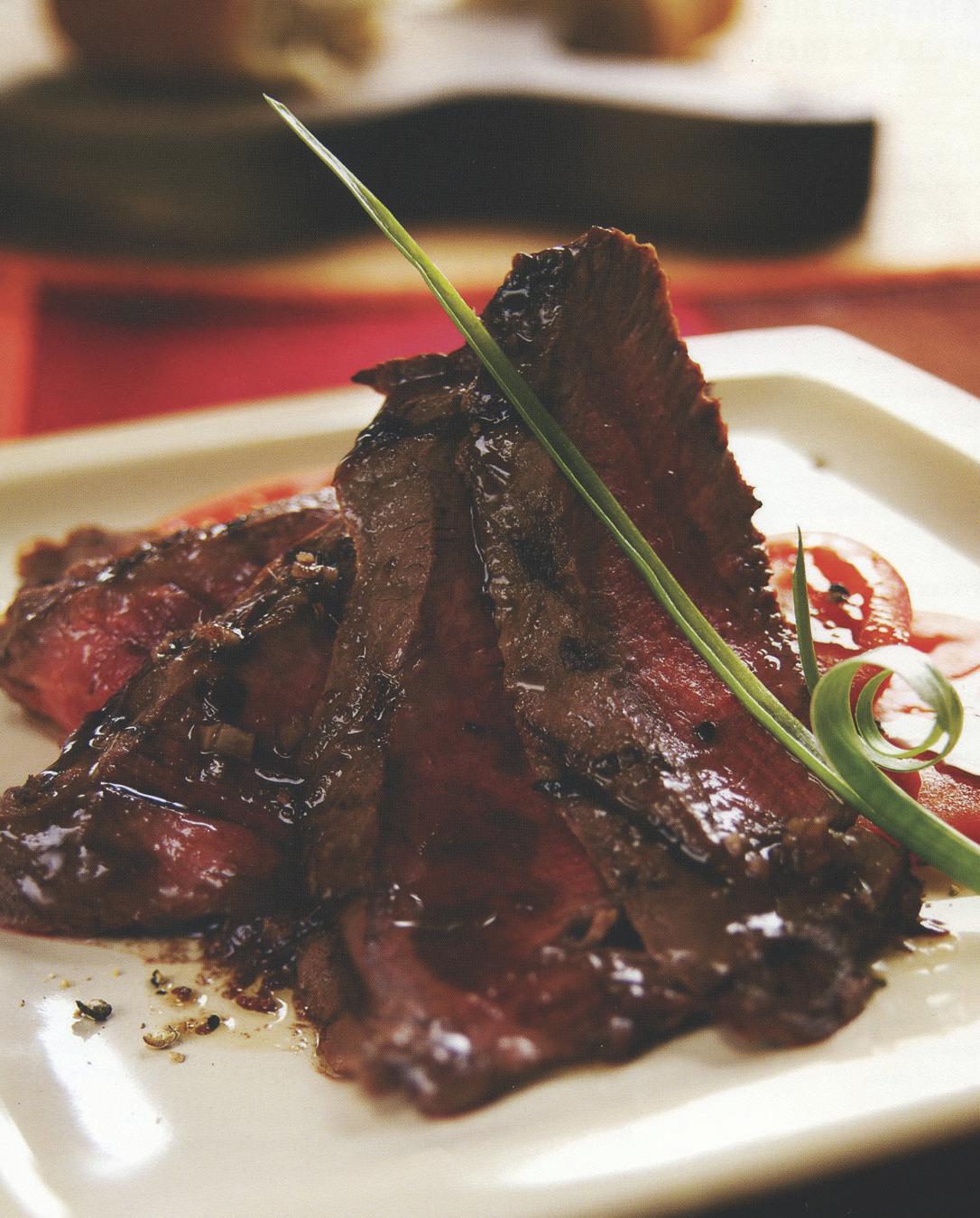
A new take on GRILLED STEAK
By MetroCreative
Grilling season has returned, and steak lovers everywhere have once again started to enjoy grilled steak.
This season, add some more flavor to your grill with the following recipe for “Flatiron Steak and Tomatoes With Anchovy Vinaigrette,” courtesy of “The Niman Ranch Cookbook,” (Ten Speed Press).
FLATIRON STEAK AND TOMATOES WITH ANCHOVY VINAIGRETTE
Serves 4
Ingredients
■ 3 tablespoons extra virgin olive oil
■ 6 anchovy fillets packed in olive oil
■ 1 clove garlic, minced
■ 2 tablespoons, plus 1 teaspoon red wine vinegar
■ 1 flatiron steak, 1 pound
■ 2 large, ripe tomatoes
■ Pinch of crushed red pepper
■ Kosher salt and freshly ground black pepper
Directions
Prepare and light a charcoal grill for cooking.
Heat two tablespoons of the olive oil in a sixinch skillet over low heat. Add the anchovies and break up with a wooden spoon. Cook for 1-2 minutes, until the anchovies become aromatic.
Add the garlic and crushed red pepper and cook for about two minutes, or until the garlic is cooked through but not browned. Remove from the heat and stir in two tablespoons of the vinegar. Set aside.
When the grill is at its hottest (when the coals are red and glowing and too hot to hold your hand over the grill for more than a couple of seconds), season the steak on both sides with salt and pepper.
Place the steak on the cooking grate directly over the coals and cook uncovered, turning once, for 4-5 minutes per side for medium rare; the timing will depend on the thickness of the steak. Transfer to a cutting board and let rest for 5 minutes.
Slice the tomatoes and arrange in the center of a serving platter. Drizzle with the remaining tablespoon of olive oil and the remaining teaspoon of vinegar. Season with salt and pepper. Slice the steak thinly across the grain and arrange over the tomatoes.
Pour the anchovy vinaigrette over the top of the steak. Serve.
Associated Press













Inventory at highest level since 2018
Buyers finally have more options both in our region and the country as real estate inventory has risen to the highest level since 2018.
This has resulted in a slight softening of prices, but an increase in the number of transactions as some buyers have finally come o the sidelines. However, days on market is also increasing as buyers don’t feel rushed to make a decision right away, and many continue to be priced out by home prices and mortgage rates.
When buyers do make an o er on a home, they have more room for negotiation with price and terms — it’s more important than ever to work with an agent who brings experience and savvy to the negotiating table and has the leverage to begin a conversation, even if at first it might appear the buyer and seller are too far apart to bring a deal together.
Considering the increase in inventory and other factors in the market, we recommend sellers work with their agent to price their home in alignment with today’s market; this isn’t a time for aspirational pricing.
Work with an agent who will price your home strategically based on current inventory in your micro hood. As always, we continue to see homes that are exceptionally prepped for market and strategically priced sell faster than houses not ready for prime time.
INVENTORY, 4




With
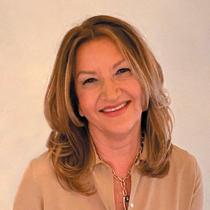
for
Evan Wyman

















United Indians of All Tribes Foundation breaks ground on Northwest Native Canoe Center
Recently the United Indians of All Tribes Foundation (UIATF) celebrated a significant milestone for Seattle's Indigenous community, holding a groundbreaking ceremony for the highly anticipated Canoe Carving House. This landmark project, marking the first phase of the Northwest Native Canoe Center, is located at Lake Union Park (900 Westlake Ave N, Seattle, WA 98109) and ushers in a new chapter for traditional Native carvers and the thriving Intertribal Canoe Community.
The ceremony was attended by a diverse gathering of Tribal Leaders, dedicated Community Members, and influential State and local leaders. The atmosphere was charged with anticipation and a deep sense of historical significance, as speakers reflected on the journey that led to this day.
The Northwest Native Canoe Center fulfills a dream long envisioned by UIATF's founder Bernie Whitebear. He, along with other dedicated activists and Tribal Leaders, tirelessly advocated for essential waterfront access and a permanent gathering space for learning about carving, embracing canoe culture, and fostering community celebration. As the Canoe Journey has flourished and
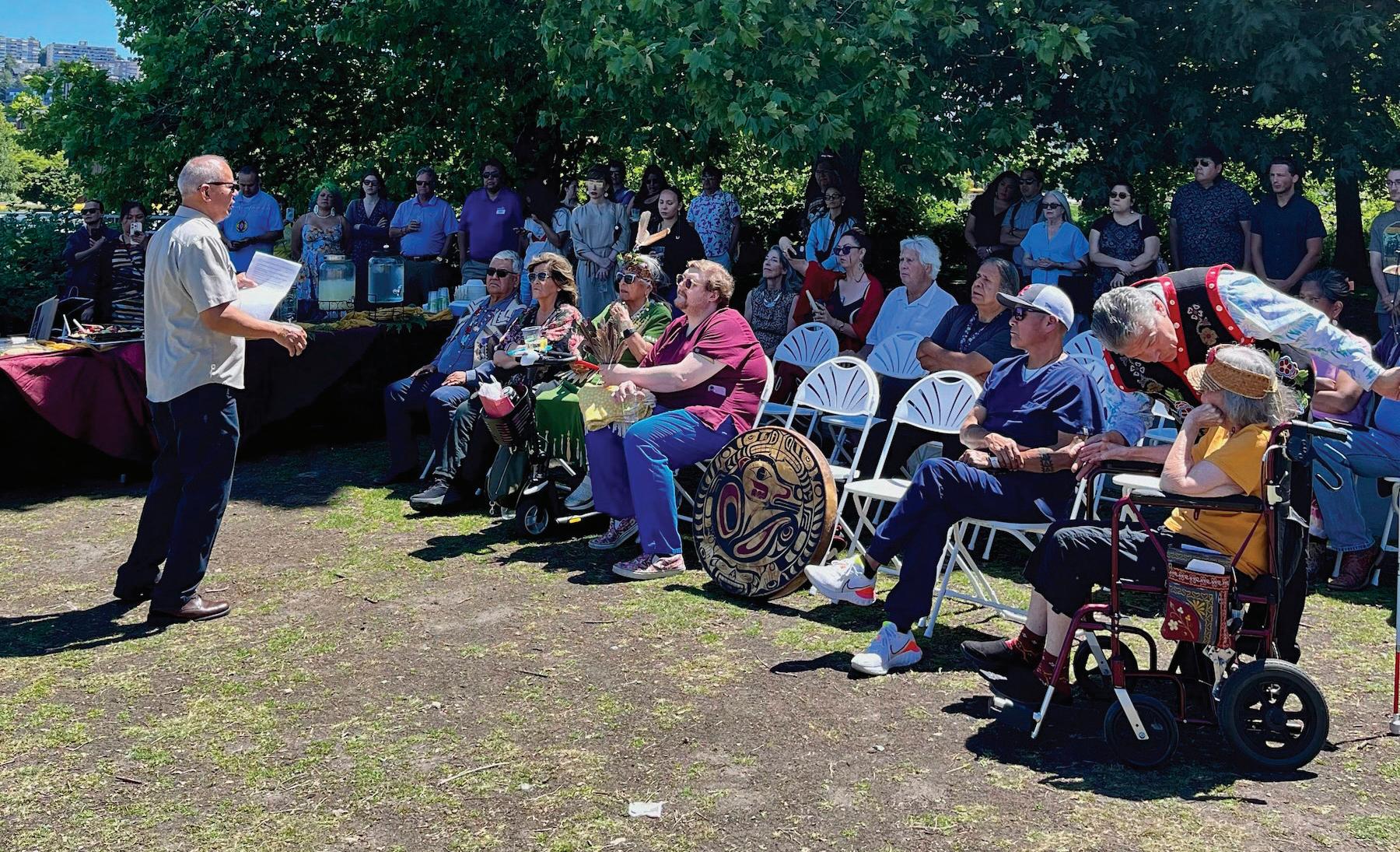
expanded over the last 20 years, becoming a beacon of hope for the continuation and full vitality of traditional heritage, our community's need for a permanent place
to land and gather in Seattle has also grown.
Dr. Mike Tulee, CEO of United Indians of All Tribes Foundation said, “the Northwest Native Canoe
Center will not only be a home for traditional Native carvers and the Intertribal Canoe Community but also a vibrant hub where all of Seattle can experience and engage
with the richness of Native heritage. This groundbreaking signifies a powerful step forward in cultural resurgence and community empowerment.”


What My Clients Are Saying...


“Laura Halliday is enthusiastic, wise, experienced, thoughtful, understanding, calm, organized and always helpful. She completed the sale of my beautiful condo the rst day on the market. She's a true professional who excels in all there is to know about getting the job done. I am so thankful I selected her. She made a normally emotional task a breeze. Who could ask for anything more? Did I mention my property sold for full price? She grasped the market perfectly. Laura is a pro.” -
Jean Viereck





MADISON PARK
2070 McGilvra Boulevard East
Recently the United Indians of All Tribes Foundation (UIATF) celebrated a signi cant milestone for Seattle's Indigenous community, holding a groundbreaking ceremony for the highly anticipated Canoe Carving House. COURTESY
Today’s buyers are not looking for projects; they want to move in, unpack, and start making memories. Let’s take a look at the recent market stats in our area:
FOR DENNY BLAINE, BROADMOOR, WASHINGTON/MADISON PARK
March 15 through June 15:
Sold homes: 40
Average sales price: $2,394,594
Average days on market: 63
Average price per square foot: $831
Lowest sales price: $467,500
Highest sales price: $ 9,375,000
Selling at 97% of original listed price
Worth note: 32 of these are $1M-plus and the average market time over $1M is 54 days
March 15, 2024, through June 15, 2024:
Sold homes: 27
Average sales price: $2,852,382
Average days on market: 47
Average price per square foot: $885
Lowest sales price: $440,000
Highest sales price: $6,900,000
Selling at 99% of original listed price
FOR 98112
March 15 through June 15:
Sold homes: 108
Average sales price: $1,909,143
Average days on market: 41
Average price per square foot: $701
Lowest sales price: $355,000
Highest sales price: $9,375,000
Selling at 99% of original listed price
Worth note: 80 of these are $1M-plus and the average market time over $1M is 41 days
March 15, 2024, through June 15, 2024:
Sold homes: 74
Average sales price: $1,923,291
Average days on market: 23
Average price per square foot: $752
Lowest sales price: $330,000
Highest sales price: $6,900,000
Selling at 102% of original listed price
MY TAKEAWAYS:
■ Prices have slightly softened but the 2025 spring market showed quite a jump in number of transactions
■ There does seem to be a market for move-in ready, remodeled homes
■ Homes that need work tend to take longer to sell
■ Buyers are not being rushed to make decisions as noted by the increase in market time year over year
■ It bears repeating that when planning to list your home, it pays o to spend time and resources to properly prep the home for sale; a small investment will result in a higher return for a seller
■ The market feels balanced
■ There has also been an uptick in o market sales — 10 of the 40 sales in the Madison Park area the past three months have were unlisted, o market properties
■ It’s important to work with an agent who has a history in the Madison Park market who also has a great network of agents they work with
■ Websites like Zillow don’t show all available inventory
As of press time, there are 19 homes for sale over $2.5M in Madison Park, Washington Park, Broadmoor, and Denny Blaine.
None of the residences are condos, and the highest priced single-family home for sale remains a waterfront home for sale at $39,950,000
Call me to learn more about our Compass experts in 98112 who are ready to help you navigate this market to your advantage with the latest technology, top-notch marketing, strong broker relationships, and proven pricing strategies.
Evan Wyman is founder, managing broker at the Wyman Group.









Washington Park retreat with captivating views, nestled in a modern tree house built with sustainable and eco friendly interior/exterior nishes, and boasts 3 beds with en suite baths. This home exudes contemporary style with modern sensibility and security that will always be on trend. While on a tucked away street, this home is still conveniently located within walking distance to Madison Park cafes, beach and schools with quick access to 520, UW & downtown.




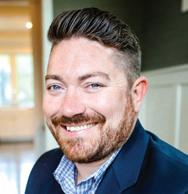


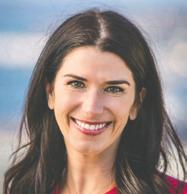
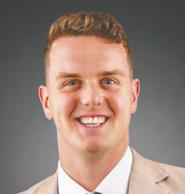

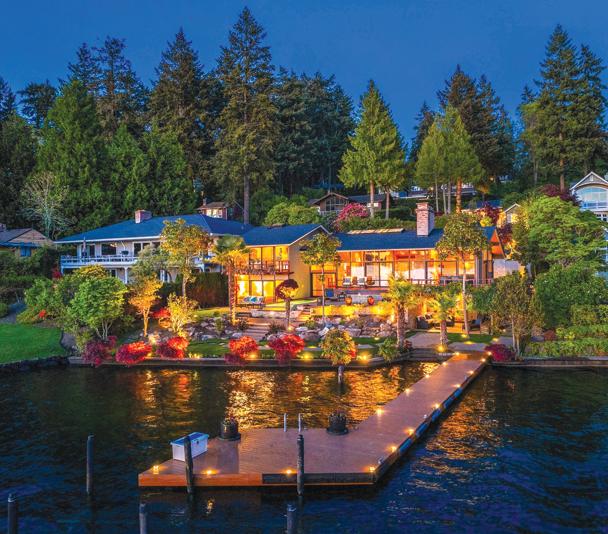

Ryder Fasse Sales Broker
Andrea Whitehall Sales Broker
Piers Foley Sales Broker
Memoree Myers
ce Manager
Chris Sudore President/Founder
Megan Bassetti Marketing








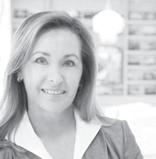







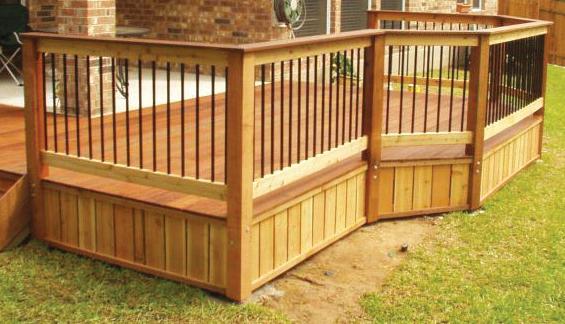

CUPPING TO THE RESCUE!
Have you observed distinctive discshaped marks on the shoulder blades of your neighbors at the gym or in yoga class? Or perhaps you first spied the telltale round discolorations when watching Michael Phelps stroke to victory at the 2016 Olympic Games? Maybe you've witnessed the marks on an increasing contingent of athletes, both elite and novice, ever since? What are these marks, why do they vary in color, and why would someone seek out cupping?
Practiced in Chinese medicine for millennia, cupping creates gentle suction on the skin and superficial fascia, often leaving signature circular marks (1-3 inches in diameter) that gradually fade over one to 10 days. The decompression of cupping contrasts with most manual therapies (like massage) which use a compressive force. It is the suction that uniquely helps separate fascial layers that may be stuck due to injury or inflammation. This decompression improves circulation of blood and lymph, reduces pain and stiffness, breaks up fascial adhesions that restrict mobility, and optimizes tissue health, hydration and function.
Despite the unmistakable skin markings, cupping itself is generally not painful. When the cup is first placed on the skin you'll feel a gentle suction as air is removed from the cup. Mild cupping feels like a firm, pleasant stretching



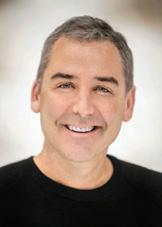
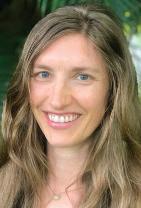
sensation, while more intense suction elicits a deeper pulling sensation. Many patients request it specifically because they know from experience the refreshing pain-relief and newfound tissue suppleness and mobility it ushers. I certainly relish the cupping treatments I receive!
Cupping techniques vary and are selected based on the patient's specific challenges. Some techniques leave nary a trace, such as channel cupping which involves gently pulling a lightly-suctioned cup over oiled skin along a meridian line. Other techniques involve a deeper static suction for longer duration, and often (though not always!) leave a temporary discoloration mark.
Experienced cupping recipients know that cupping marks vary a lot. Intriguingly, the mark itself – whether soft pink, deep red, purple, black, pale, grey, white, or even spotted with petechiae of various shades – is diagnostic. Cupping over healthy tissue elicits an even soft pink tone, regardless of the intensity or duration of the suction (within reason).
Cupping over challenged tissue can prompt an array of colors, each suggesting unique Chinese medicine diagnoses (such as heat, cold, or mild or severe qi and blood stagnation) each with distinct supplemental treatments. Over a handful of cupping sessions, the color evoked shifts toward soft pink. As the color improves so too does mobility, pain level, and tissue health.
Often folks are curious whether cupping marks are in fact bruises. Nope! Both involve skin color shifts but otherwise are distinct. Bruises form when blunt trauma causes blood capillaries to rupture. The result: subcutaneous bleeding, tissue damage, and often soreness. As the bruise heals it moves through a literal rainbow of colors from purple to red to yellow to green, as the hemoglobin under the skin is enzymatically broken down. Conversely, with cupping,
tissue damage and pain are minimal to none as cupping does not generally rupture capillaries. Rather, cupping marks form when suction pulls fluid and blood cells through the endothelial cells that line the capillaries, toward the skin’s surface. As the fluid is reabsorbed by the lymph and blood vessels, the cupping mark fades in color without changing hue.
If you are curious to try cupping and yet would prefer no marks, just let your practitioner know, as he or she can often provide a gentle mark-free session so you can get a taste – still reaping benefits – and decide if you want to go deeper the next time.
Interestingly, though best known for helping with injury recovery, pain, and athletic performance (thanks to the cupping badges worn by prominent athletes like Michael Phelps, Kobe Bryant, LeBron James, Alex Rodriguez, and Tom Brady) cupping aids other ailments as well. When cupped along the relevant Chinese medicine meridians it can help with an array of concerns including chronic coughs, chest congestion, asthma, digestive issues, and various headaches and migraines.
If you're seeking optimal tissue health and mobility, improved blood and lymph flow, relief from stubborn pain or stiffness, or reprieve from other internal conditions, cupping may be a new friend! Of course there are several situations in which you would want to avoid cupping, or modify treatment location, intensity, or techniques, so be sure to seek out an experienced practitioner.
Annie Lindberg is a licensed acupuncturist, Chinese medicine practitioner, and Ayurvedic practitioner. She also holds a Masters of Environmental Studies. She owns and practices at The Point Acupuncture & Ayurveda, located in Madison Park and is a regular Madison Park Times health columnist.
Annie Lindberg LAc, MES, MAcOM
ADOBE STOCK
By Spencer Pauley | The Center Square
It’s now up to Seattle voters to decide on a six-year $1.3 billion levy that funds early-learning programs for the city’s youth.
On Tuesday, the Seattle City Council unanimously approved the Families, Education, Preschool, and Promise, or FEPP, Levy, with a focus on funding childcare in the city to ease the financial burden on lower-income families. In total, the tax would fund early learning, childcare, and post-secondary preparation programs over six years, from 2026 to 2032.
The levy has an average tax rate of 61 cents per $1,000 of assessed value over the six-year period. If passed, it would cost the owner of a median assessed value Seattle home averaging $1.1 million about $656 a year, or almost 86% more than the $353 that the homeowner will pay toward the levy this year.
Out of the $1.3 billion in expected revenue, $658.2 million would go toward increasing the capacity of affordable childcare slots from 600 to 1,400, and an additional 600 slots for the Seattle Preschool Program.
Another $235 million would go to health and safety initiatives through Seattle’s K-12 schools.
Lastly, $82.5 million would be dedicated for post-secondary education and career support.
Seattle City Council Chair Sara Nelson said the FEPP Levy is one of the most important levies the city has, due to its impact on early learning and child development.

“This is the ballot measure that I think has the greatest long-term impact, because we know how important kindergarten readiness is and this particular levy does double the


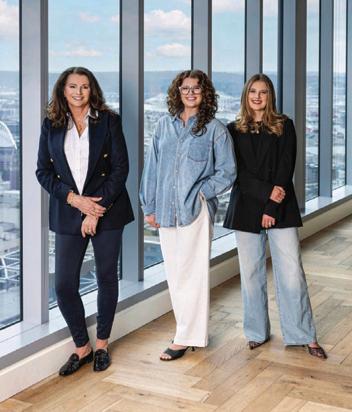
opportunity for people to take advantage of that critical readiness service,” Nelson said during the city council meeting.
Seattle voters have consistently supported the previous education levies,


including in 1990, 1997, 2004 and 2011. In 2018, the Families and Education and Seattle Preschool levies were combined to create the current FEPP Levy, which 68% of voters approved.




Listed by Olga Dyckman with Windermere Midtown





